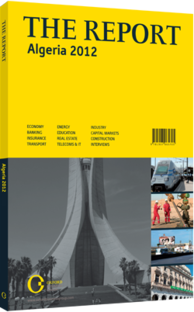Liquid banking: Adept balancing has helped to avoid excess liquidity and inflation, although some risks remain
In order to stoke growth following three years of underwhelming performance, central banks around the world have sought to pump liquidity into domestic markets. A variety of extraordinary and one-off measures – which include a combination of asset purchases and loan operations, along with near-zero interest rates – have been used in Europe and the US to encourage an uptick in economic activity, yet doing so could dramatically increase the risk of higher inflation.
High inflation rates have been worrying for countries in North Africa – a key factor in the uprisings in Tunisia and Egypt in 2011. However, Algeria is awash in cash from its hydrocarbons sector and has managed to largely avoid both a surfeit of liquidity and high inflation thanks in part to an extremely prudent balancing act by its central bank. Algeria’s high levels of liquidity come from its oil and gas revenues, which not only directly expand the money supply but also help fund multibillion-dollar capital programmes, which further increase liquidity. Still, the country relies heavily on imported foodstuffs and manufactured products, leaving it vulnerable to price rises.
MONETARY SPONGE: Most of the excess wealth is channelled through the government and goes into local currency accounts held under the oil stabilisation fund, which provides the government with a budgetary buffer should oil prices drop. The country’s public banks also help absorb additional funds. The cash surplus from the national oil company Sonatrach, for example, is directed into the largest state-owned financial institution, the Banque Extérieure d’Algérie. The central bank has also regularly adjusted the compulsory reserve ratio and uses two short-term repurchase and deposit facilities, equal to roughly 17% of GDP at the end of summer 2011, to further assist sterilisation.
Deposits have grown significantly at banks in recent years. During the first half of 2011, they leapt by 16% year-on-year (although unsurprisingly credit growth increased by only 15% for the same period, given the country’s loan-to-deposit ratio of 52%,), spurred in part by the steady salary rises in the public sector, a significant component of the workforce.
STABLE INFLATION: The combination of expansionary fiscal policy, higher deposits and increased capital and reserve requirements has led to a steady increase in commercial bank liquidity, but due to low lending (see overview), the system has avoided a large rise in prices.
Although civil servants salaries have risen by as much as 50% since 2008, prices in the consumer basket of goods and services have remained comparatively stable, hovering around 7% for much of 2012. This can be explained by the rise in private household savings at banks and the growth in import consumption.
INCREASED RISK: If risk management procedures are not further strengthened, there is the potential for worry about the overall performance of the banking sector. An excessive amount of liquidity in the system encourages banks to boost lending, which should help credit growth. This is not happening as quickly as expected but nonetheless loans were up 14% in 2011 year-on-year. However, a rapid increase in credit growth leads to increased risk taking and given the mixed quality of loans – with non-performing loans still in double-digits, at 11% – and the regular repurchase of bad debt through bond swaps or capital injections, the danger of moral hazard is clear.
The high liquidity of commercial banks in Algeria also lessens the need to attract further deposits – and cultivate long-term savings – and reduces the urgency to resolve asset-liability issues. Compounded with a still-developing credit registry and ratings system, there is cause for concern.
However, the central bank has a reputation for prudent management and has thus far ensured that the outlook for the country’s lenders is encouraging in the short and medium term. Work has already begun to expand credit monitoring and spur further lending activity, alongside improvements to risk management capacity, all of which should help Algeria’s banks continue to absorb liquidity without buttressing inflation.
You have reached the limit of premium articles you can view for free.
Choose from the options below to purchase print or digital editions of our Reports. You can also purchase a website subscription giving you unlimited access to all of our Reports online for 12 months.
If you have already purchased this Report or have a website subscription, please login to continue.

